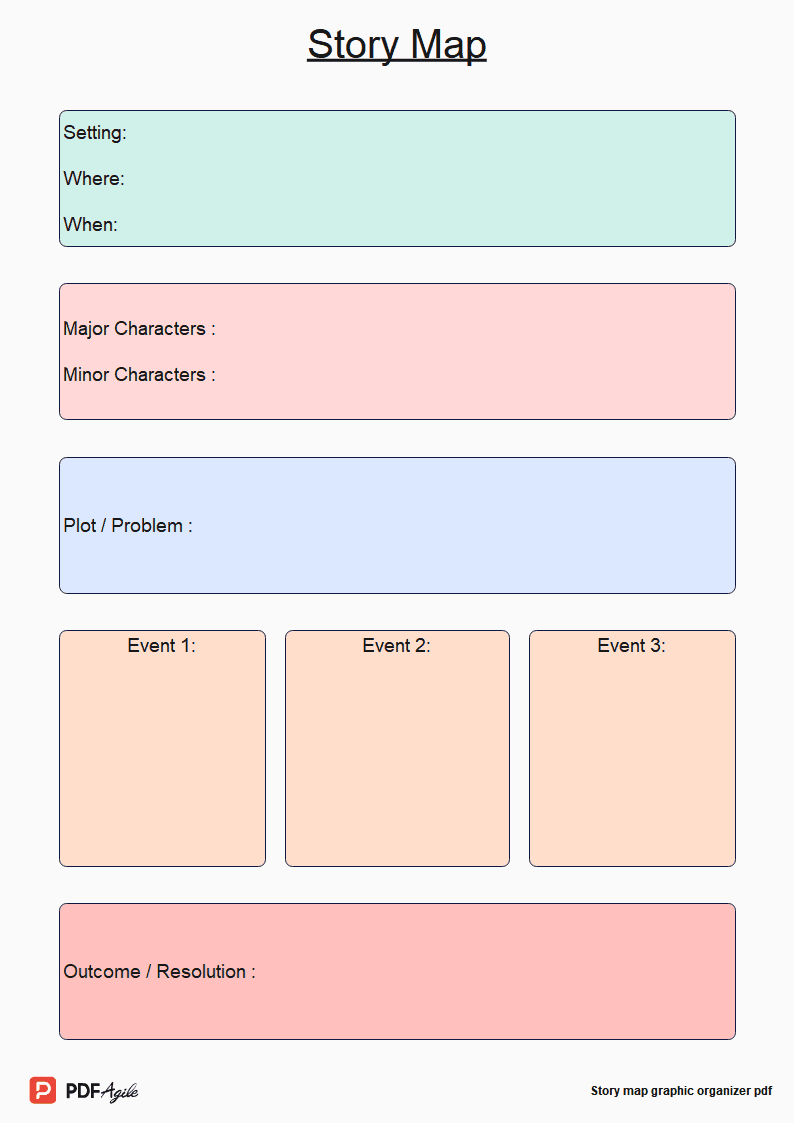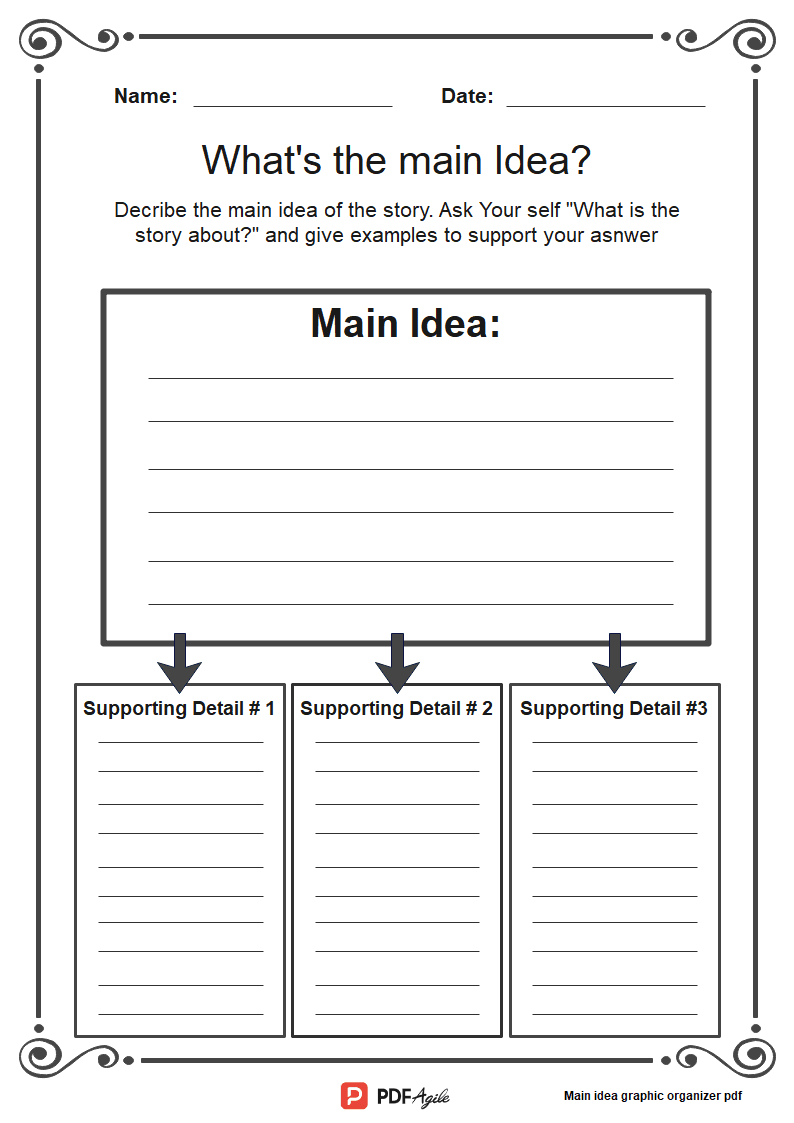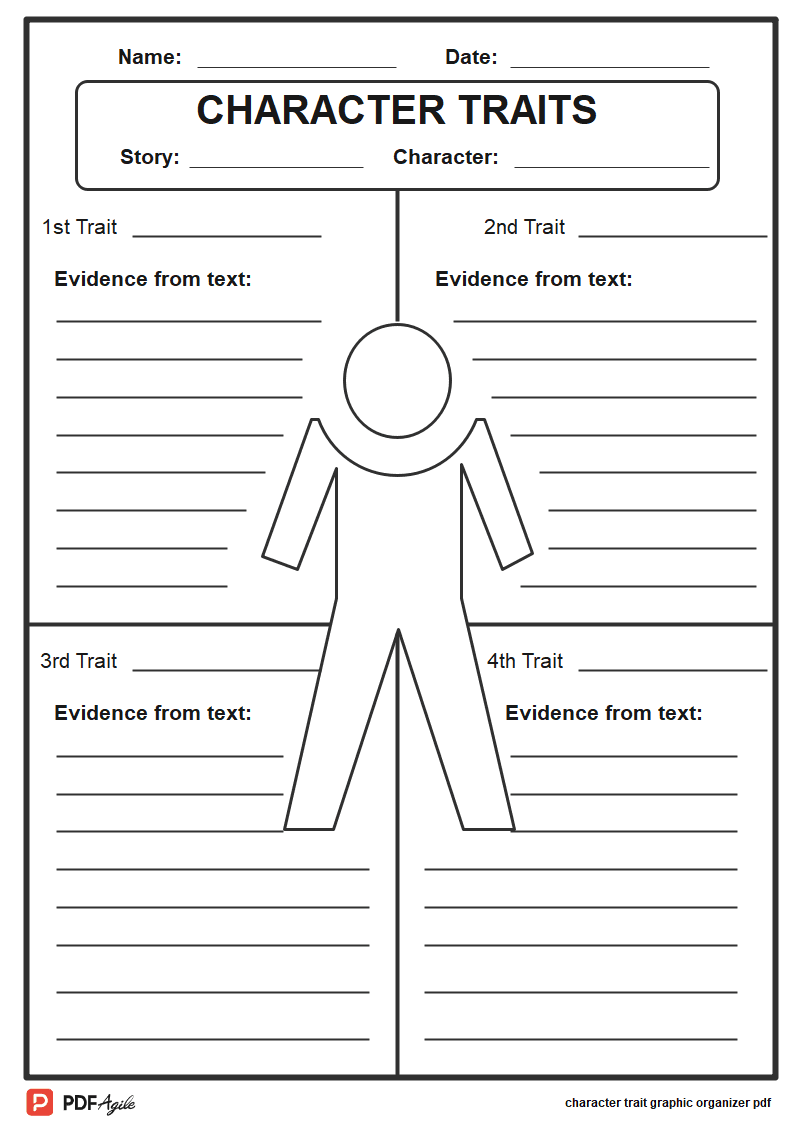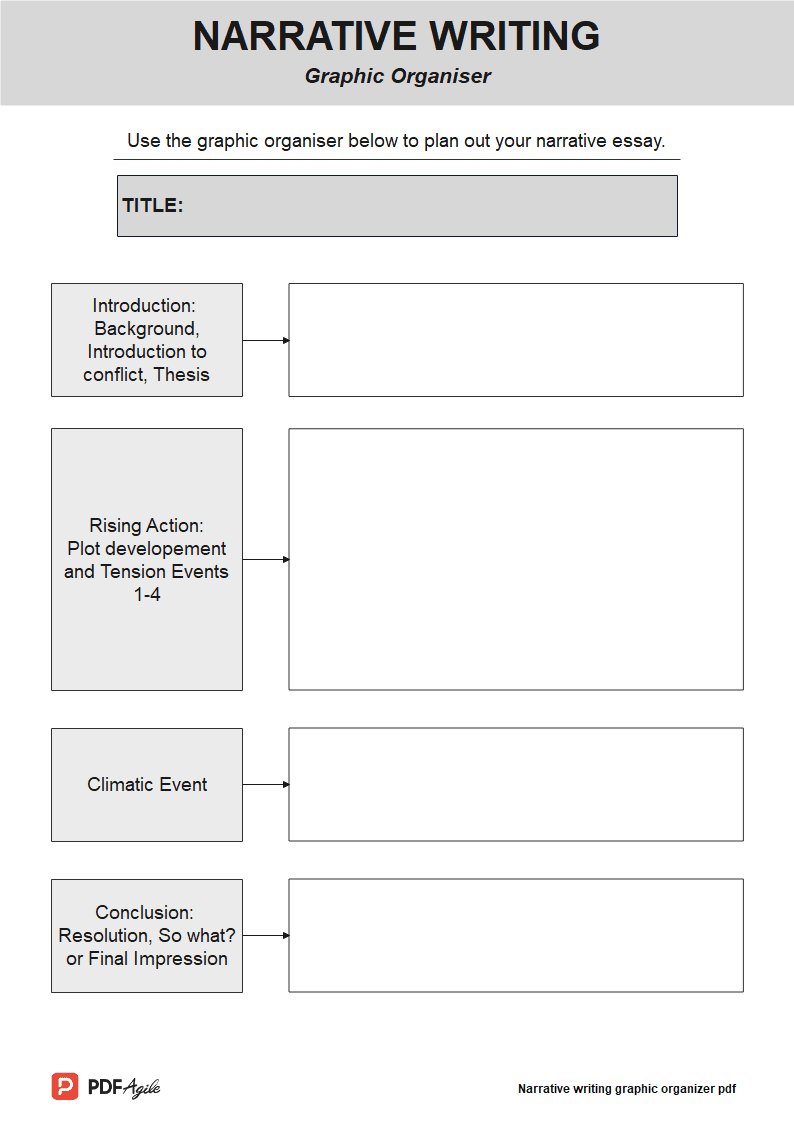Part 1: What is a Story Map Graphic Organizer
A story map uses a graphic organizer to help students master the elements of a book or story: by naming story characters, plot, setting, problem, and solution, students can study the details. There are many different story map graphic organizers, with the most basic focusing on the story's beginning, middle, and end. These designers focus more on plot or character traits in their advanced versions.
Story map graphic organizer PDF is a technique that helps students identify the essential elements of a story or novel. These include characters, plot, setting, characters, and themes. More complex stories may consist of additional details for an in-depth approach. Teachers mostly use story maps in the classroom to help students with their comprehension, research, and analysis skills; various versions of story maps are also used in marketing, sales, and product development to create products or user stories.
Part 2: Benefits of Story Map Graphic Organizer PDF
Let us now see some of the benefits of the story map graphic organizer PDF:
- They improve students' comprehension by giving them a framework for identifying the elements of a story.
- They assist students of varying levels in organizing information and ideas.
- They can be written alone, in small groups, or in a whole class setting.
- They can be written during or after reading.
- They are helpful for all students, but they are handy for students who need the extra help of a graphic organizer.
Part 3: How to Use Story Map, Graphic Organizer
Subjects: Language Arts
Grades: The story maps are used in reading and language arts by having students identify the setting, characters, the issue, and the solution in the story and record them in the boxes provided. They can be as simple as beginning, middle, and end, or they can include plot, setting, characters, etc.
How to use a story map graphic organizer in education
Step 1: Instruct your group on the meaning of the story by discussing the main components of the narrative, such as characters, plot, obstacles, etc.
Step 2: You can even create a story map for the beginning, middle, or end of your story.
Step 3: Once you have decided which elements you want to work on and which model to create, start creating your story map.
Step 4: As a reference, you can import images, links to documents, or other documents that relate to your story.
Step 5: Choose shapes of your choice from the extensive shape library, and add text. For ease of use, you can use the editable story map template, customize the color palette, and enter your details.
Step 6: Once you enter the details, you can analyze the story with your group and engage via video conferencing and comment threads.
Step 7: For sharing with group members or publishing on popular platforms, export your story map in PNG, SVG, JPEG, and PDF formats.
Part 4: Free Printable Story Map Graphic Organizer PDF Template Download
If you want to share with group members or publish on different platforms, export your story map in PDF format and re-edit using PDF Agile. However, you can download the story map graphic organizer PDF template and edit or convert it to other files using PDF Agile. Insert main keywords here at least once.
Conclusion
Thus, that was everything on the story map graphic organizer PDF. Most people have either read a book and then seen the movie or watched the movie and then re-read the book. Right? That is a book you can recall with more detail than other books you've read because it used a multisensory approach to the text. A story map graphic organizer is a literacy strategy that uses a graphic organizer to help students understand the components of a book or story. Through identifying story characters, plot, setting, problem, and solution, students attentively read for details, and the graphic organizer helps them better know the different parts and how they relate to one another.




